#osechi
Text

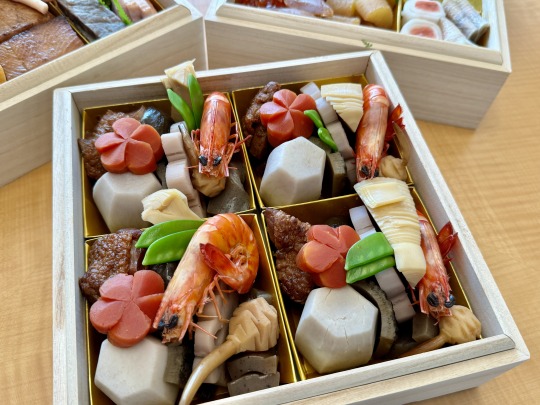


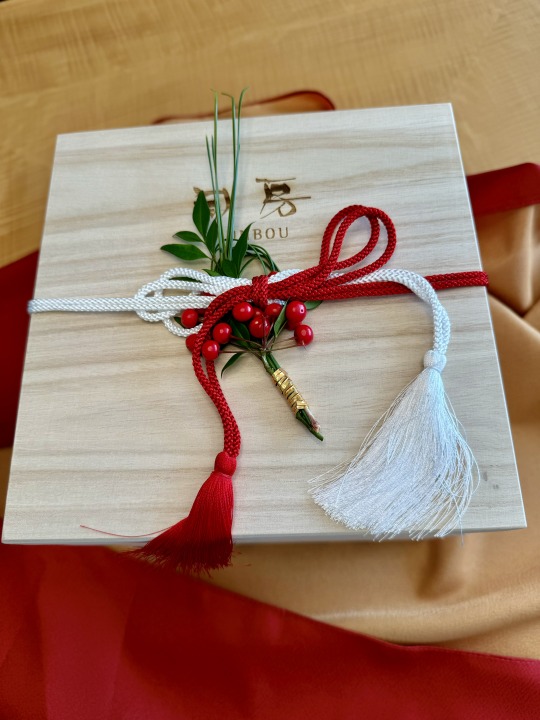
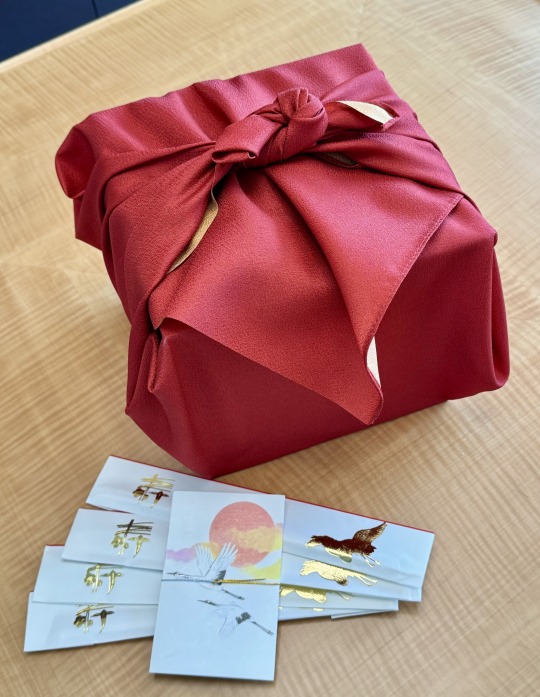

「Osechi-ryori」 New Year's dishes
Everything was excellent.
4K notes
·
View notes
Text
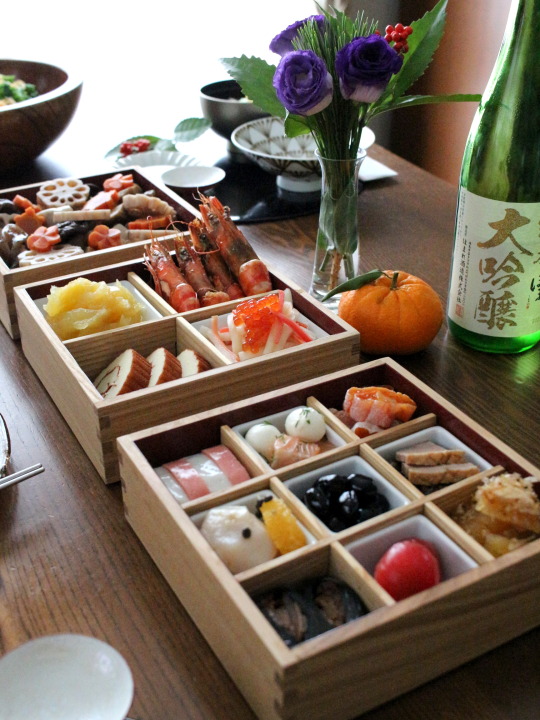
I wish you a great new year !!
97 notes
·
View notes
Text

Happy New Year!
This is the osechi I ate, and it is a special sweets osechi! Osechi is a traditional Japanese new year food that comes in stacked boxes and is filled with many different dishes. Each of the dishes symbolize things such as happiness or longevity for the upcoming year. However this year, my friend ordered this non-traditional sweets version and was kind enough to share with me!
皆様あけましておめでとうございます。
今年のおせちはスイーツおせち!
今年もどうぞよろしくお願いします。
412 notes
·
View notes
Text








あけまして おめでとう ございます♪
akemashite omedetou gozaimasu
Happy new year!
I made some Osachi new year plates for my family.
and show you my cute cat Anzu. ฅ(*ΦωΦ*) ฅ
42 notes
·
View notes
Text
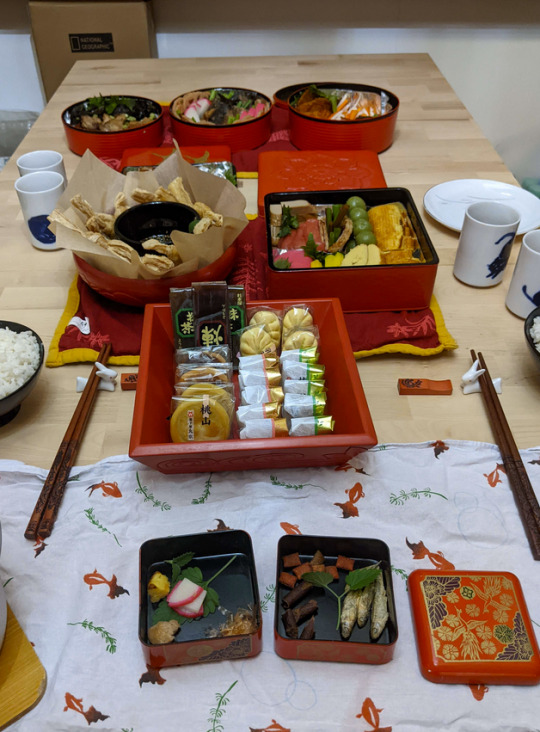
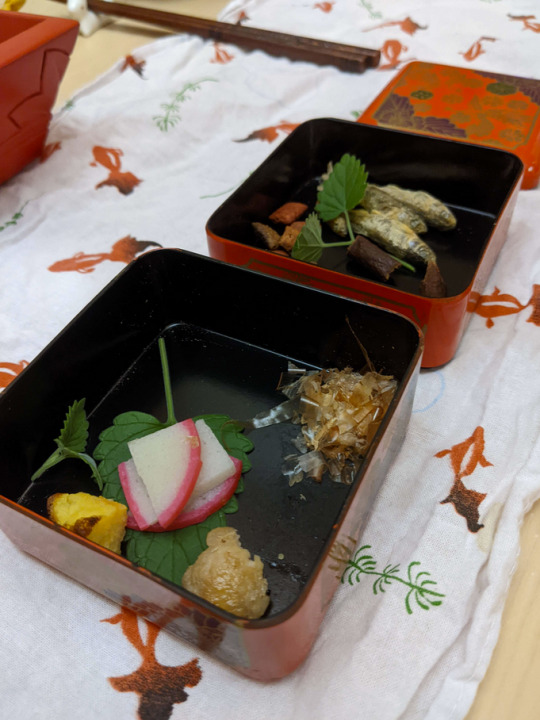
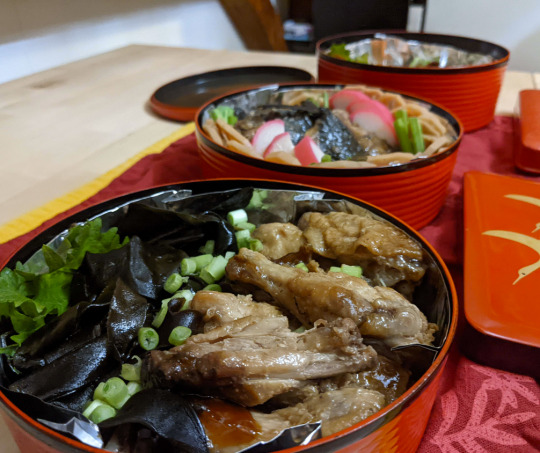
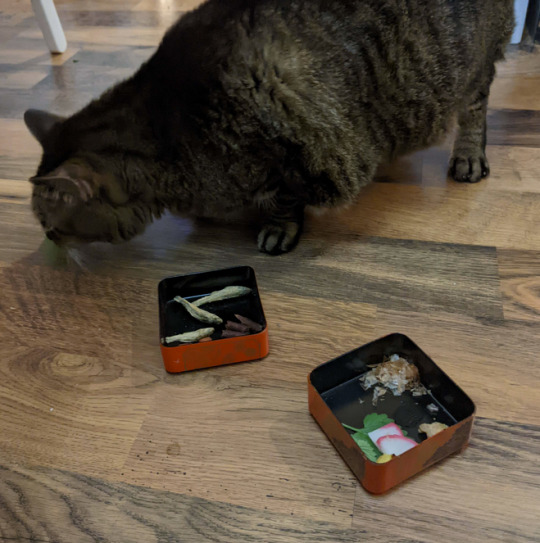
Happy New Year everyone!
I know I haven't been super artistically active this year and I know a lot of the rest of yall have been in a similar boat.
I think I learned a lot this year about small things, like putting away dishes and finding out what kinds of soap I like and what kinds of clothing I feel comfortable in, and I know that's not impressive or a real marker of personal growth, but I know that I am still moving and changing and living, even if it's not impressive or concretely better, and I think that's worth celebrating too.
Here's the gorgeous Osechi spread that Bat put together for us including the meticulously folded but visibly unimpressive tinfoil that I did, and a teeny tiny Jubako for Dexter.
Lot of love for you all, all across the world in all your different situations and lives! Let's grow and change together!
#osechi#jubako#food#the lotus root isn't very visible but if anyone needs me to tag for it lemme know#food is art too mister dragon
36 notes
·
View notes
Text

Hello2024
おせちは広い意味でお弁当なのでは?と思うので今年もここにポストします。
かまぼこ以外は自作です。
31 notes
·
View notes
Photo
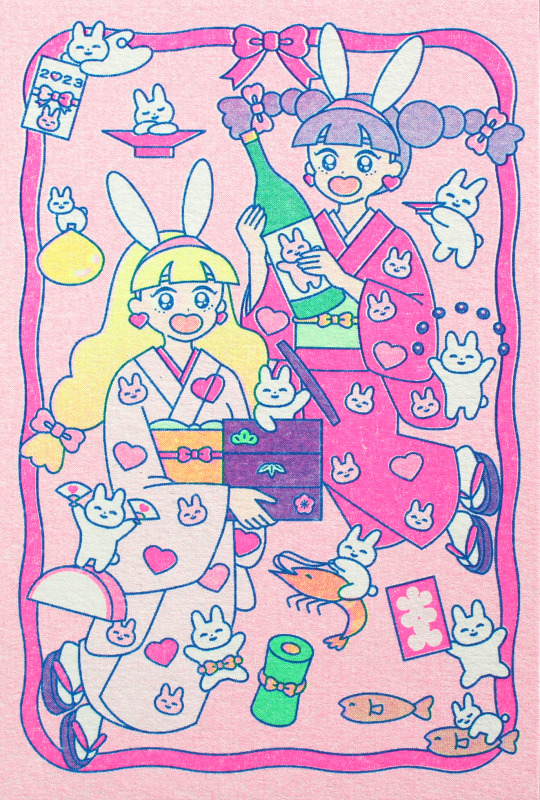
🎊🐇2️⃣0️⃣2️⃣3️⃣🐇🎊
あけましておめでとうございます🐰🌸
今年もよろしくお願いいたします✌️🥳✌️
#Happy New Year#2023#rabbit#year of the rabbit#animal symbols#kimono#girl#Illustration#illustrator#osechi#Japanese new year foods#2023年#卯年#うさぎ年#干支#うさぎ#兎#着物#年賀状#おせち料理#イラスト#イラストレーター#イラストレーション#おおぐりさちこ#sachikooguri
134 notes
·
View notes
Photo

ぷん@Pum_Jeunesverts あけましておめでとうございます! 今年はおせち作らない代わりにおせちクッキーを作ってます 我ながらかまぼことこんにゃくが本物みたい これから焼いてまいる!
93 notes
·
View notes
Text
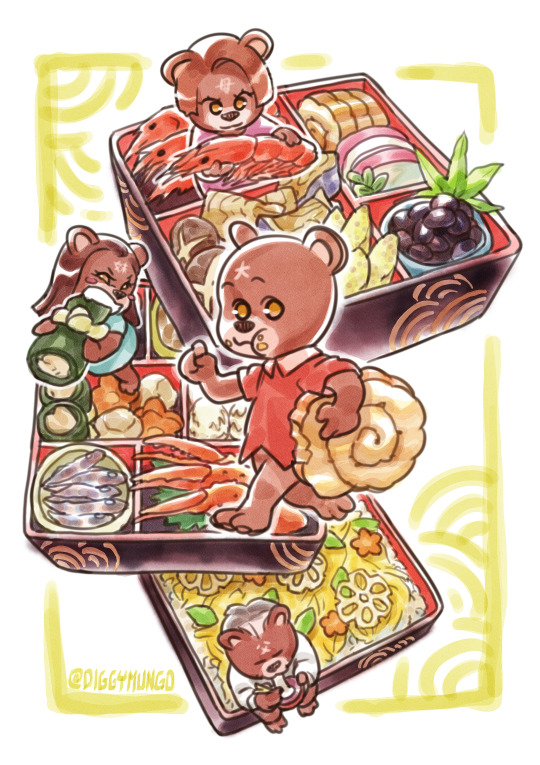
おせち料理
12 notes
·
View notes
Photo

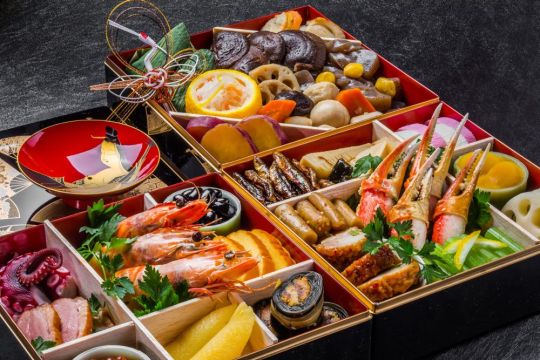
Japanese New Year Tradition: Osechi Ryōri
In Japan, starting off the New Year is more about spending time with family than it is about partying. It's a time of year when people go back to their home towns, pay their first visit to the local shrine, and sit down to some traditional food. And food doesn't get more traditional than osechi ryōri.
The tradition behind osechi ryōri (お節料理) goes back centuries, to the Heian period (794-1185). Ritual offerings of food used to be presented to the gods on sechinichi, or days that marked the changing of the seasons according to traditional Chinese almanacs that were used during this time. The most important sechinichi, of course, was the day that marked the beginning of the New Year. On this day, special dishes were offered to various deities, and also eaten by members of courtly society.
Over the centuries, these traditions made their way to the rest of society, and by the Edo period (1603-1868), they were being practiced commonly around Japan. They combined with other beliefs, notably that on the first days of the New Year, any kind of work — including cooking — was to be avoided. There are two competing theories as to why this was the case. One was that the gods shouldn’t be disturbed by the sounds of cooking on the first days of the year, and the other is simply that the beginning of the year was meant to be a time of rest, when everyone — particularly the women of the household, who did most of the work around the home in those days — could enjoy a well-deserved break.
In the beginning, osechi was quite simple food — vegetables boiled in soy sauce and vinegar — but over the centuries, more and more types of food were added to the osechi ryōri lineup, turning it into a much more elaborate affair. Almost all of these dishes have a special meaning, related either to the name of the food in Japanese or to its appearance or other special characteristics. These are some of the most commonly eaten dishes, and their associated meanings:
Kuromame (黒豆)
Black beans are meant to be a symbol of health, with the associated idea that the person who eats them will be able work hard in the year to come.
Kazunoko (数の子)
This dish is herring roe, but the symbolism is connected both to the large number of tiny eggs, and to the meaning of the Japanese words. Kazu means “number” in Japanese, and “ko” means “children.” The wish behind this item is that the next year will bring many children. For an extra layer of meaning, look to the name of the fish in Japanese: the word for herring is nishin, and if it’s written with an alternate set of kanji (二親), it means “two parents.”
Tazukuri (田作り)
This dish is sardines boiled in soy sauce. Historically, sardines were used to fertilise rice fields, and this word means “rice field maker” in Japanese. Symbolically, this food is eaten in the hopes that the coming year’s harvest will be plentiful.
Kohaku Kamaboko (紅白かまぼこ)
Kamaboko is a kind of fish cake, and kohaku means red and white. The colours represent Japan (most easily found on the country’s flag), and are generally considered to be good luck. According to some, the red colour is meant to prevent evil spirits, while white represents purity. Incidentally, Kohaku Uta Gassen is one of the most popular TV shows that Japanese people watch on New Year’s Eve, and it’s a singing competition between two teams comprising of the most popular singers in Japan — the white (male singers) and the red (female singers).
Datemaki (伊達巻)
This is an omelette mixed with mashed shrimp or hanpen (fish paste). It tastes a little bit different from the tamagoyaki that you might be used to, but it’s rolled into a similar shape, which happens to look like a scroll from the side. That’s why this particular food is associated with learning and scholarship.
Kurikinton (栗きんとん)
These are sweet dumplings that are made from chestnuts. Because they’re yellow in colour, they’re associated with gold, and eating them is meant to bring financial prosperity in the year to come.
Kobu (昆布)
This is a type of seaweed, and this word is closely connected to the word yorokobu, or happiness, which is what this food is meant to bring in the New Year.
Tai (鯛)
Sea bream; the symbolic meaning here is something of a play on words. Tai is part of the Japanese word medetai, meaning happy or joyous. This fish is often eaten on special occasions, and it’s one of the dishes that is served as okuizome, the traditional food that a baby is fed about 100 days after he or she is born. In osechi, it’s meant to bring joy and happiness in the new year.
Shrimp (海老)
The kanji for shrimp mean “old man of the sea,” playing on the sea creature’s bent back and antenna that look like whiskers. This food is meant to bring longevity.
Satoimo (里芋)
Also known as taro root, this dish is eaten in the hopes that the family will be blessed with many children — just like many small taro tubers grow off of the main tuber.
Renkon (蓮根)
Known as lotus root in English, this vegetable has very distinctive holes when it is cut in cross sections. Because you can see clearly when you look through these holes, this food is eaten in the hopes of having a future with no obstacles — or at the very least, obstacles that you can see clearly.
Just as it goes with any tradition, not every dish is eaten at every household, and some dishes fall out of favour over time – sometimes because younger people don’t particularly enjoy eating them, or because tastes change. (One newish item that you’ll find in osechi ryōri spreads, although it doesn’t have any special meaning yet, is roast beef.) The osechi dishes are, for the most part, served in elegant lacquer boxes known as jubako.
Some families prepare the osechi themselves, while others choose to order theirs from department stores or convenience stores. For those who wish to purchase a beautifully crafted osechi for their New Year’s celebrations, department stores like Takashimaya and Keio stores offer fantastic options — though they certainly don’t come cheap!
#Japanese New Year#Osechi Ryori#お節料理#Osechi#Japanese Cuisine#Sanganichi#Japanese Tradition#New Year#Osechi Ryōri#Japanese Food
31 notes
·
View notes
Photo
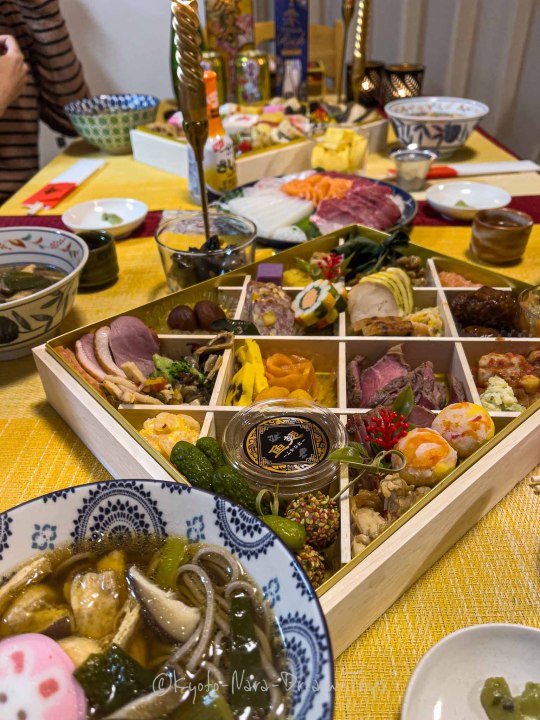
The Japanese New Year (正月 shōgatsu) is an annual festival with its customs. The preceding days are quite busy, particularly the day before, known as Ōmisoka.
23 notes
·
View notes
Text

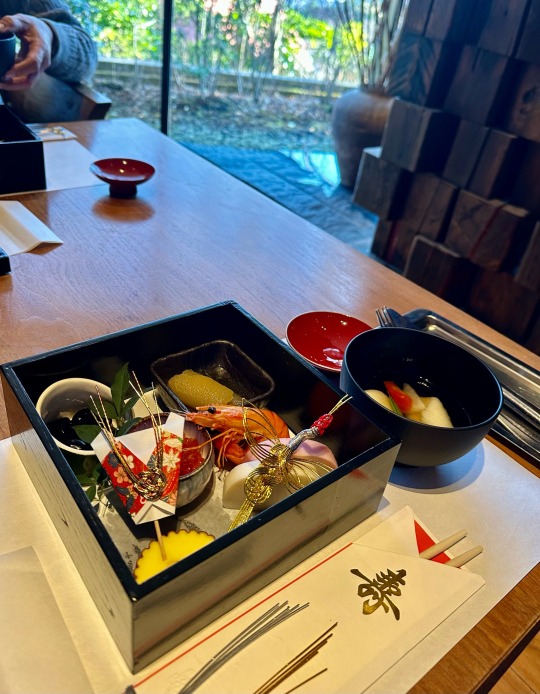
happy new year
Osechi dishes are the traditional meal only prepared for New Year.
235 notes
·
View notes
Video
youtube
2024年のおせち料理 Japanese New Year's Food【重箱に盛り付け】
28 notes
·
View notes
Text

#osechi#virtual food#videogame food#animal crossing#animal crossing new horizons#acnh#animal crossing screenshots#animal crossing food#acnh food#meal#new year's#new years#holiday#bento box#bento#prawns#prawn#japanese new year's
13 notes
·
View notes
Text
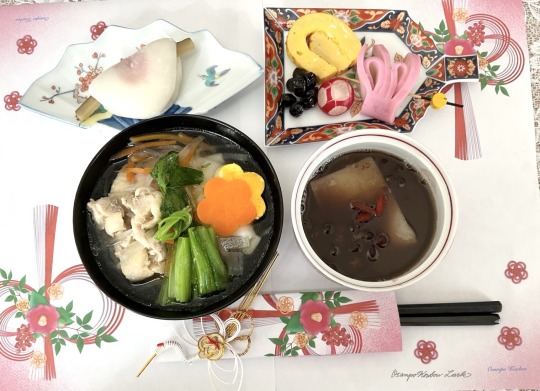
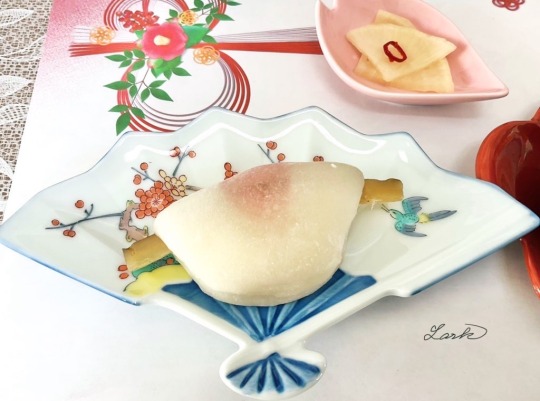





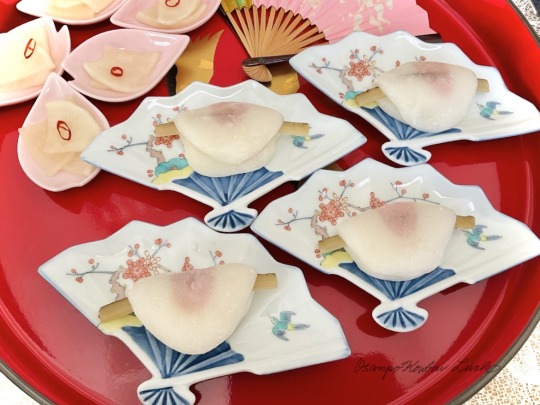

あけましておめでとうございます!
akemashite omedetou gozaimasu
These are my family’s osechi ryouri, the traditional Japanese new year dish. I made them as my mother made before.
I drew a rabbit for nengajyo, a new year card as this year is a rabbit year in Japan.
ことしも どうぞ よろしく おねがいします。
13 notes
·
View notes
Text
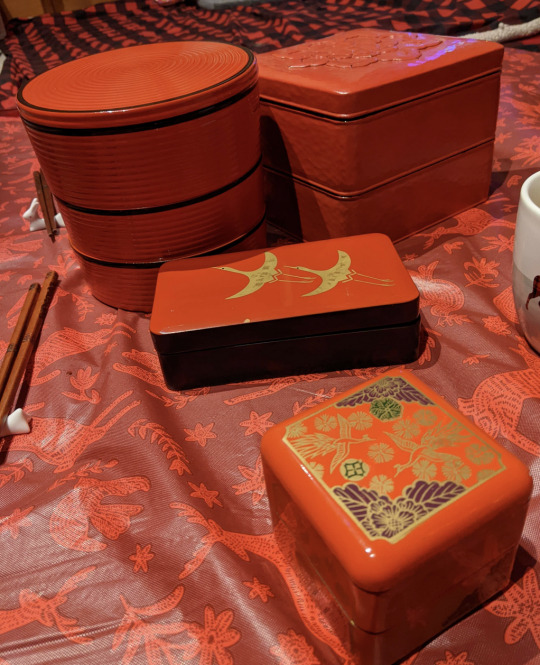
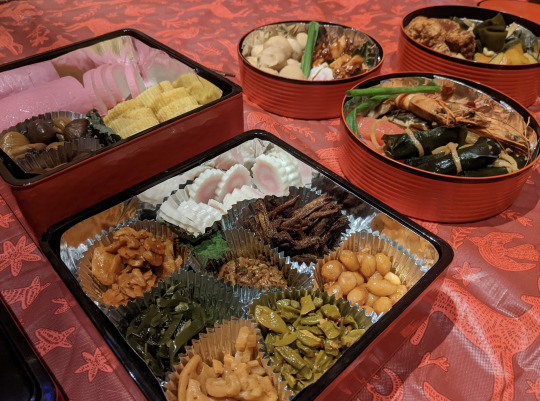


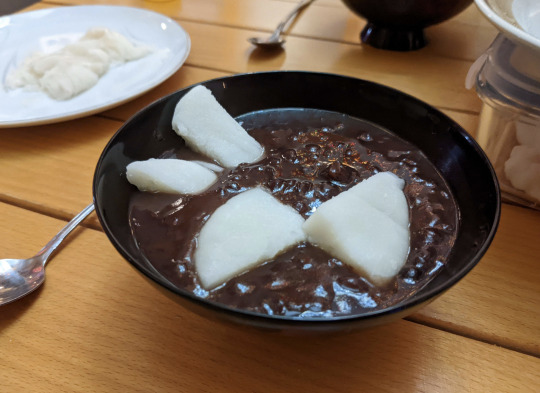
okay, promise this is the last food/non-art pic for a bit okay. but anyway, here's our new-years osechi spread \o/
we went a little overboard because we inherited my grandmother's jubakos and dishware, and the more we learned about it the more emotional we got over it.
anyway, here's to a wild year we all got through. Happy birthday to us all!!!
#not art#the thing I like the most about newyear#is feeling like everyone everywhere is celebrating the same overwhelming feeling#of existing and growing and changing#food#almost forgot to tag that it's food#jubako#osechi
60 notes
·
View notes